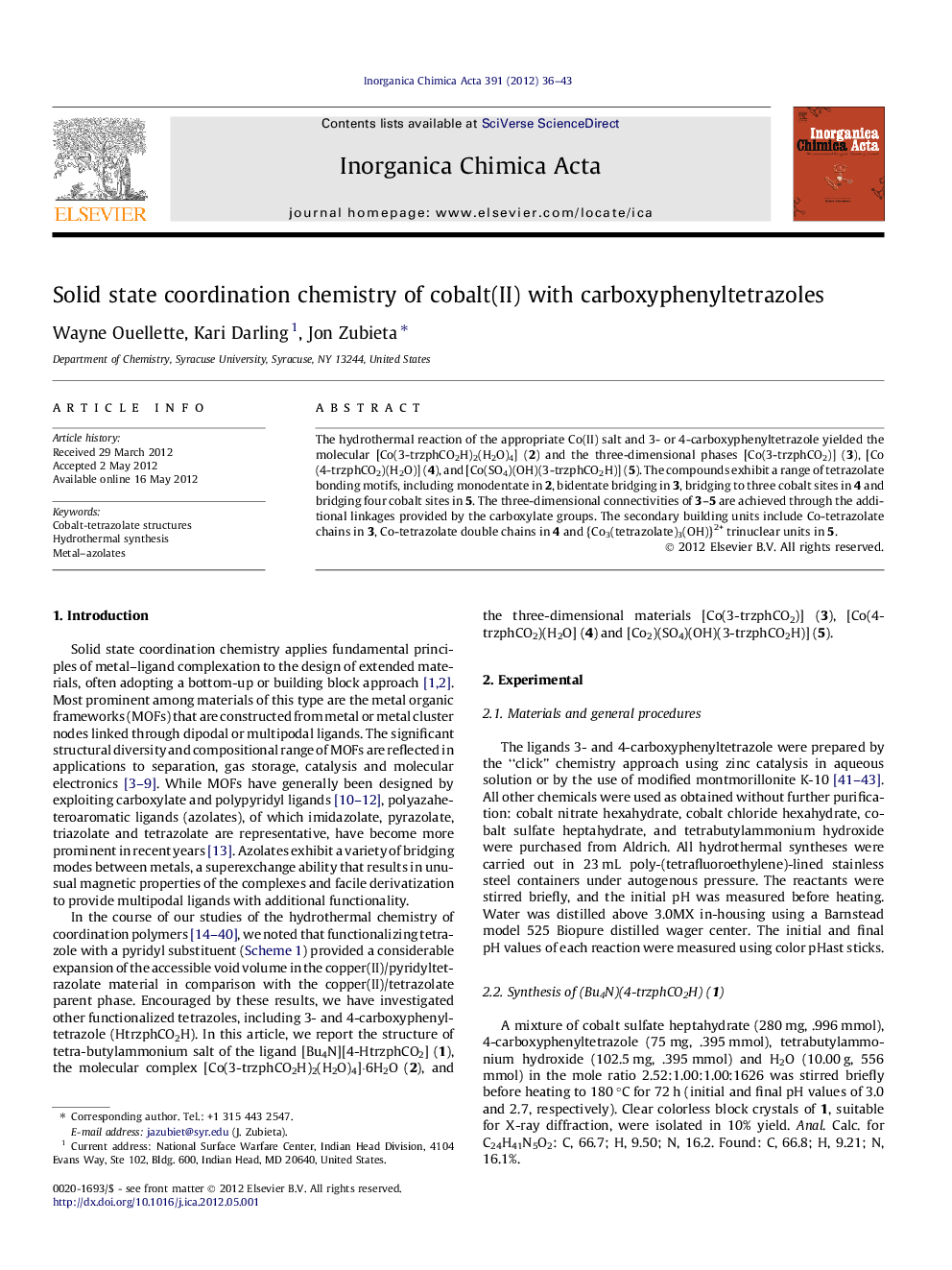| Article ID | Journal | Published Year | Pages | File Type |
|---|---|---|---|---|
| 1312392 | Inorganica Chimica Acta | 2012 | 8 Pages |
The hydrothermal reaction of the appropriate Co(II) salt and 3- or 4-carboxyphenyltetrazole yielded the molecular [Co(3-trzphCO2H)2(H2O)4] (2) and the three-dimensional phases [Co(3-trzphCO2)] (3), [Co(4-trzphCO2)(H2O)] (4), and [Co(SO4)(OH)(3-trzphCO2H)] (5). The compounds exhibit a range of tetrazolate bonding motifs, including monodentate in 2, bidentate bridging in 3, bridging to three cobalt sites in 4 and bridging four cobalt sites in 5. The three-dimensional connectivities of 3–5 are achieved through the additional linkages provided by the carboxylate groups. The secondary building units include Co-tetrazolate chains in 3, Co-tetrazolate double chains in 4 and {Co3(tetrazolate)3(OH)}2+ trinuclear units in 5.
Graphical abstractA series of cobalt(II)/carboxyphenyltetrazolates has been prepared by hydrothermal methods. The pillared layer structure of the three-dimensional [Co2(SO4)(OH)(3-trzphCO2H)] (5) is shown in a mixed ball-and-stick and polyhedral representation.Figure optionsDownload full-size imageDownload as PowerPoint slideHighlights► Hydrothermal synthesis of a series of Co(II)-carboxyphenyltetrazolate materials. ► Identification of a variety of secondary building units, including Co-tetrazolate chains, double chains and trinuclear units. ► Structural influences of sulfate incorporation.
